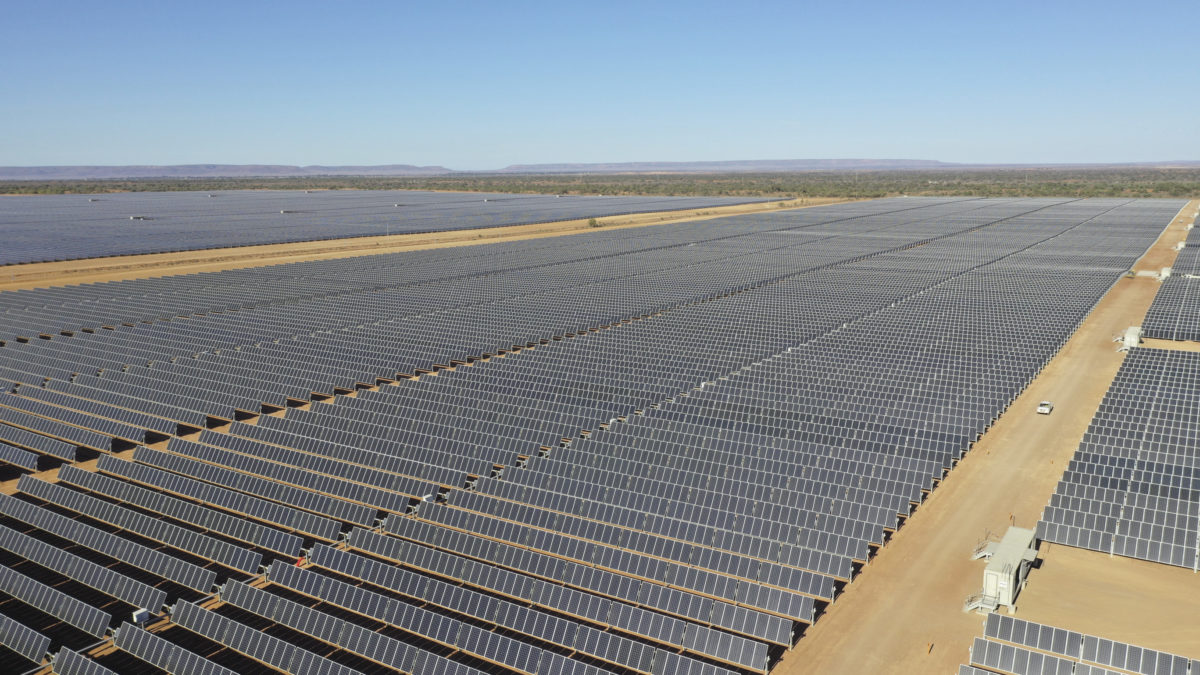The Australian Energy Market Operator (AEMO) this week revealed 32 projects, totaling more than 3.3 GW of new renewable energy capacity, were registered for connection into the National Electricity Market (NEM) in 2020 and there are no signs of the growth in renewables slowing.
New figures released by AEMO earlier this week show that since March 1, 2021, the federal energy market operator has registered four new wind and solar generators in the NEM, with a total capacity of 226 MW while five generators, contributing a total of 383 MW, completed their commissioning and are in commercial operation.
The ongoing growth in renewables has served to offset concerns of potential electricity supply shortfalls triggered by the earlier-than-expected closure of the Yallourn Power Station in Victoria’s Latrobe Valley.
EnergyAustralia announced in March it would shutter Yallourn in 2028, four years sooner than initially scheduled, to build a 350 MW/1.4 GWh big battery in its stead. The four-hour, utility scale battery is expected to be complete by 2026.
The 1.45 GW Yallourn power plant currently supplies about 20% of Victoria’s electricity demand, or 8% of the NEM, and modelling from AEMO suggests its closure could lead to potential electricity supply shortfalls emerging between 2028 and 2030.
AEMO’s 2020 Electricity Statement of Opportunities (ESOO) Update models the Yallourn Power Station’s exit from the grid and additional ‘committed’ generation and storage projects not considered in the 2020 ESOO.
AEMO chief systems design officer Alex Wonhas said the fresh modelling suggests there will be a breach of the market’s minimum reliability standards in the absence of a “further commitment of dispatchable capacity.”
“The modeling of the Yallourn exit and new connections since the 2020 ESOO, result in an increase in forecast unserved energy (USE) for Victoria and South Australia,” he said.
“As a result, the interim reliability measure (IRM) will be exceeded in both states in 2028-29 and 2029-30, unless there is further commitment of dispatchable capacity.”
While the loss of Yallourn’s capacity is an issue, figures published by AEMO indicate more than enough dispatchable capacity is expected to be built to address these reliability concerns.
Popular content
“Based on the pipeline of registered and commissioned renewable projects, we’re well ahead of the 2020 Integrated System Plan’s ‘step change’ scenario which would see more than 90% renewable penetration, including rooftop solar PV, by 2040,” Wonhas said.
AEMO said more than 40 projects, totaling nearly 4.9 GW completed registration or began exporting to the grid in 2020 while another 300 generation and storage projects, totaling 55 GW, are proposed across the NEM.
The 120 MW Gangarri Solar Farm in Queensland is among the new generators registered, along with the 85 MW Winton Solar Farm and 7 MW Ferguson South Wind Farm in Victoria, and the 14 MW Adelaide Desalination Plant Solar and Battery facility, in South Australia.
The 100 MW Bomen Solar Farm leads the way for the new generators which have already been commissioned and are in commercial operation. Others include the 30 MW Molong Solar Farm, in NSW, the 27 MW Maryborough Solar Farm, in Queensland, and the 144 MW Cattle Hill and 82 MW Elaine wind farms, in Tasmania and Victoria, respectively.
Victoria has the strongest connection pipeline of any NEM state, with 32.8 GW across 131 projects in the connection pipeline. Victoria’s proposed capacity is 80% more than the next biggest state, New South Wales, which has 8.1 GW across 52 projects in the application or completion process.
“We’ve seen registrations of new wind and solar projects in Victoria more than double, from 467 MW in 2019 to 1,146 MW in 2020,” Wonhas said.
“We expect registrations to further increase in 2021, with 2,000 MW of new wind, solar and battery storage projects forecast.
“These new generation sources will help transition our electricity market, as two out of three of today’s coal-fired generators are due to retire by 2040.”
This copy was amended on 17/05/21 to add details of the scale of the solar-plus-storage project planned by EnergyAustralia to enable early closure of the Yallourn power plant.
This content is protected by copyright and may not be reused. If you want to cooperate with us and would like to reuse some of our content, please contact: editors@pv-magazine.com.



I hope that ‘chief systems design officer’ is planning for the extra loads that the EVs will be putting on the grid. All countries have to at least triple the amount of renewable energy to the grid to offset the transition away from fossil fuels.